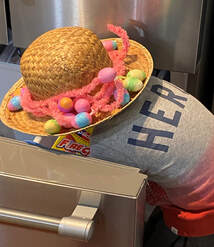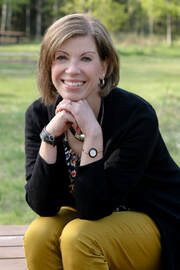
It’s wonderful really. Daryl Sutter, head coach of the Flames, and man of very few, often only one or two, words, reminded us before game one of the series that it didn’t really matter who people cheered for, but that the most important thing was this series was bringing people together.
I watched Game One on Thursday. Jim and I cheered as loudly as those at the game in person. Besides the incredible talent on the ice, two other things struck me. One was the sea of red jerseys in the Saddledome. Of course, there were plenty of orange jerseys too, but somehow in the panned-out version of the crowd, they all blended together to look the same; as they should have, for everyone there was cheering for their favourite. The second thing was the number of people in the crowd singing our National Anthem along with George Canyon. This makes my heart sing.
Earlier that day, half-way across our country in our nation’s capital, Prince Charles and Camilla, along with an appreciative crowd of spectators watched as the men and women of the Royal Canadian Mounted Police performed the Musical Ride in honour of their visit to Canada. According to a personal account from a couple of my family members, it was a spectacular afternoon. I can believe this.
Watching these officers, dressed in their beautiful red serge uniforms, atop spectacularly talented horses, weave together and perform their precision maneuvers, as majestic music accompanies their every move, is rather indescribable. It brings such pride to those in the audience. Even more, it has a way of bringing people together.
I’ve been lucky enough to see this musical ride a few times; several times on the Stampede grounds, only metres away from the Saddledome, and also at Spruce Meadows equestrian facility where on Thursday evening, just hours after the musical ride had finished, and just an hour before the first puck dropped at the Saddledome, the premier of our province, having shown poorly in a leadership review, announced he would resign. On a newscast later that evening a reporter mused, ‘It will be very interesting to watch how Jason Kenney wears this loss going forward’. What a brilliant way to frame this.
Each of us wear the stories of our lives. The question of how we wear them struck a chord with me, perhaps because of the obvious signs of wearing I saw on Thursday – the jerseys and the Mounted Police uniforms. We often focus so much on what we are wearing, we forget to ponder how we wear it. It’s easy when it’s a uniform or a prescribed outfit. I wear my Flames jersey with pride, and honestly also just for some fun. When RCMP officers put on their uniforms, there is a code of conduct put in place at the same time. We have a code of conduct for wearing our dancing outfits, and yet I also wear mine with some extra emotions; there is pride, but there is something more too. There is a statement of stepping into bravery with this uniform, of embracing a willingness to take risks and of continuing to grow.
It's more difficult for us to wear the other things in life. How do we wear our losses, our victories, our sorrows, our pride, our dreams, our disappointments, our fears, our love, our insecurity, our bravery? When we fail, how do we wear this? Some choose anger, using it to push others away or to blame them for their part in the failure. Others, in the same situation may retreat, disappearing for some time. Others gather support and figure out how to proceed with grace.
When we feel pride how do we wear this? Do we boast to those we meet, skipping over the hurt feelings we may cause, or do we keep it to ourselves, never letting others share in our accomplishments?
How do we wear our dreams? Do we say them aloud so others might see whether we accomplish them or not? Do we wrap them up and keep them secretly inside ourselves so no one else knows? Do we ask for help in accomplishing them? Do we use them to help others accomplish theirs?
These things are not made of cloth. They don’t have logos on them advertising our commitments and our code of conduct. We can’t slip them over our heads and use them as a protection, or as a buffer or substitute for our own personal actions, beliefs or integrity. To make it more difficult, our upbringing and culture have informed us about ‘acceptable’ ways of managing many of our emotions. We have to wade through all the messaging we’ve received to arrive at the way we choose to wear our lives.
When I shop for clothing, I look for two things. I want the item to look nice on me of course. But much more importantly, it has to feel right. When I put it on, I need to feel like myself, the best version of myself. I’m trying to do this with the less tangible parts of my wardrobe too; my victories, my failures, my hopes, my dreams, my health, my aging, my competence, my weaknesses. I want to wear them all, and feel like I’m wearing my best self.
In the meantime, over the next week, I’ll slip on my Flames jersey and cheer with abandon. Go Flames Go!
My inquiry for you this week is, ‘How are you wearing that?’
Elizabeth is a certified professional Leadership Coach, and the owner of Critchley Coaching. She is the founder and president of the Canadian charity, RDL Building Hope Society. She works with corporations, non-profits and the public sector, providing leadership coaching. She creates and facilitates custom workshops for all sizes of groups. She has expertise in facilitating Strategic Plans for organizations and for conducting leadership reviews. Contact Elizabeth to learn how wear your best life.


 RSS Feed
RSS Feed